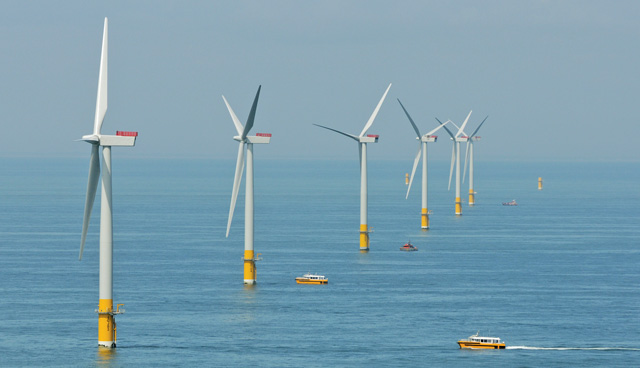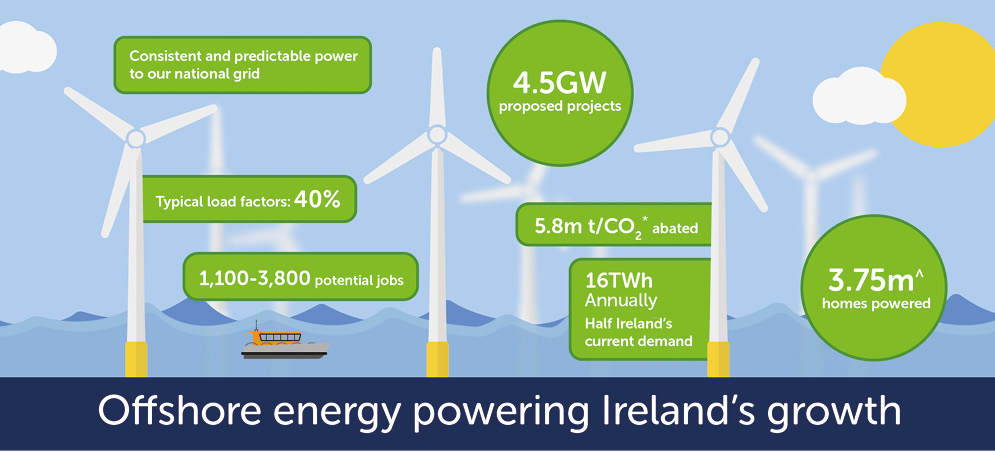Offshore wind key to meeting our energy targets

 Stephen Wheeler, Managing Director of SSE Ireland, looks at the policy choices facing the Irish Government as it prepares to redesign the State’s renewable electricity support scheme and argues that the time is now right for Ireland to invest in offshore wind energy to meet the country’s future power needs.
Stephen Wheeler, Managing Director of SSE Ireland, looks at the policy choices facing the Irish Government as it prepares to redesign the State’s renewable electricity support scheme and argues that the time is now right for Ireland to invest in offshore wind energy to meet the country’s future power needs.
In recent weeks, a government consultation on the design of a new renewable electricity support scheme closed. This consultation, to agree a replacement for the current REFIT support scheme, was keenly anticipated and was arguably the most important energy consultation that the Department of Communications, Climate Action and Environment has undertaken in recent times. The new scheme being designed will set the future course of how we will meet Ireland’s decarbonised energy goals.
Let’s be under no illusion – the stakes couldn’t be higher.
While we have made significant headway to date towards decarbonising our island economy, halving carbon emissions from electricity generation from 1990 levels, mostly through onshore wind, we cannot ignore the fact that we will miss our EU emissions targets by a wide margin, likely resulting in EU fines totalling hundreds of millions of euro.
To his credit, Minister Denis Naughten has clearly acknowledged that while Ireland remains committed to meeting our ambitious targets, the outlook is looking ever more challenging. Latest analysis by the SEAI shows that Ireland is going to miss its total 2020 Renewable Energy target by almost 20 per cent, while EirGrid estimate that we will need accelerated delivery of between 800 and 1200MW of renewable capacity if we are to meet our 40 per cent electricity target.
As such, the redesign of the State’s renewable electricity support scheme before his Department takes on even greater significance.
One of the debates within the consultation has been whether we should set specific support categories in the auction process for different renewable technologies – such as onshore wind, offshore wind, solar and biomass – or whether all technologies should compete against each other, which is described as a ‘least cost’ solution.
However, this purely price-based, technology neutral approach risks pitting the technologies that are best placed to deliver future large-scale renewable energy capacity – especially onshore and offshore wind – against each other on a pure cost per MWh basis. What’s wrong with that? Surely the lowest cost solution is the best option?

 Well, while costs associated with offshore energy are falling, it is still more expensive than other technologies on a pure cost per MWh scale. However, the ‘least-cost’ technologies on their own, such as onshore wind and solar, will not deliver on our overall targets – especially in a world where social acceptance to onshore energy developments is not what it was, and where greater grid and planning constraints have been imposed as a result.
Well, while costs associated with offshore energy are falling, it is still more expensive than other technologies on a pure cost per MWh scale. However, the ‘least-cost’ technologies on their own, such as onshore wind and solar, will not deliver on our overall targets – especially in a world where social acceptance to onshore energy developments is not what it was, and where greater grid and planning constraints have been imposed as a result.
So, can we really afford not to create the investment environment for offshore wind energy? Ireland has one of the strongest offshore wind resources in the world; yet we are the only country in northern Europe not currently developing offshore capacity.
If we are to meet our medium-term 2030 renewables targets, then we need to fast-forward the build-out of large-scale renewable energy capacity – and offshore wind energy is ready to deliver.
There are a number of significant offshore wind projects already at different development stages in Irish waters from developers, including SSE, which can deliver up to 4.5 gigawatts of offshore energy in the coming years – enough installed capacity to meet half of our current electricity demand on the island.
Offshore wind can also deliver consistent and predictable power to our national grid. Typical load factors are in excess of 40 per cent, considerably higher than most other renewable electricity sources. And with most of the proposed offshore wind projects in the Irish Sea, and close to demand load centres along the eastern seaboard, including SSE’s own Arklow Bank project, the development of offshore wind along simpler and fewer grid connections provides significant system demand benefits to the grid.
Indeed, the potential scale and strategic location of current offshore wind energy projects is such that this technology could easily meet the future energy demands of clean-tech multinationals, particularly large-scale load from data centres.
In all of this, creating investor confidence is crucial. By providing a specific auction category in the new renewable electricity support scheme from the very outset for offshore wind, policymakers will provide the clear signals and mechanisms necessary to stimulate the investment required to continue to meet our low carbon ambitions.
But it won’t stop there; creating investor confidence in the energy industry will also act as a dramatic catalyst for the maritime sector, acting as an enabler to unlock new infrastructure investment in Ireland’s ports and maritime businesses. Fostering growth in a burgeoning offshore wind energy sector will not only maximise regional economic benefits and create local sustainable jobs, it can also unlock focused community participation in the sector particularly around port towns.
We’re at a critically important point in our continued low carbon energy transition. Achieving our ambitions will not be based on a single technology solution but by creating the policy environment that supports a diversified mix of technologies that can deliver large-scale renewable power.
We have a once-in-a-generation opportunity to grasp the transformative effect that investment in offshore wind can deliver for Ireland. In doing so, we can support ongoing economic development, help achieve our decarbonisation targets, and provide continued security of supply. That’s why the policy choices we make in the months ahead will be so important for generations to come.





